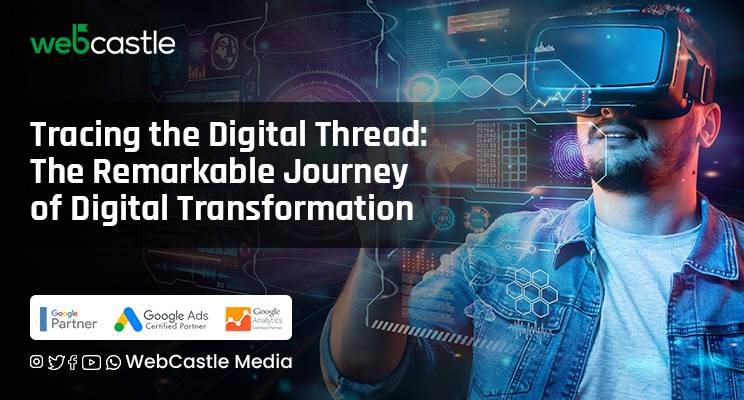
In today’s age of rapid technological change, few terms have been as frequently uttered or as widely discussed as “digital transformation”. It’s a thread that weaves through the history of our digital age, shaping businesses, personal lives, and entire societies. Let’s unravel this digital thread and trace its remarkable journey.
To understand digital transformation, we need to return to its roots. The seed was planted in the 1940s and 50s with the emergence of the first digital computers. These machines were foundational in shifting processes and data from physical to digital realms. However, it was not until the advent of the internet in the late 20th century that the idea of a connected digital ecosystem became conceivable.
As we moved into the 21st century, the internet became the loom on which the digital thread was spun. Connectivity was the game-changer. With the World Wide Web, businesses realized the potential of tapping into a global market.
But the internet was just the beginning. The rise of smartphones and mobile devices extended the reach of the digital thread, intertwining it with our daily lives. We began to communicate, shop, work, and entertain ourselves differently. Platforms like Facebook, Twitter, and Instagram shifted the paradigms of social interactions, making them more instantaneous and global.
As the thread spread, it started collecting vast amounts of data. Everything became quantifiable, from the number of steps we took in a day to the kind of content we engaged with. This data-rich environment birthed a new age – the age of data and analytics.
Companies began to recognize the power of data. They started using sophisticated tools and algorithms to gain insights, predict trends, and optimize operations. The digital thread transformed businesses from being mere service providers to entities that could understand and anticipate customer needs.
With the explosion of data and the need for more complex processing, a new challenge arose: storage and computational capacities. Enter cloud computing. It allowed businesses to scale without the heavy investments traditionally required in infrastructure. Now, startups to Fortune 500 companies could access the same resources, leveling the playing field and spurring innovation.
One of the most groundbreaking progressions in the journey of digital transformation has been the rise of artificial intelligence (AI) and automation. These technologies added a dynamic twist to the digital thread, allowing machines to learn, adapt, and make decisions.
From chatbots offering customer support to AI-driven medical diagnoses, the integration of intelligent systems has redefined possibilities. Industries across the board, from manufacturing to healthcare, have been transformed, leading to improved efficiencies, cost savings, and previously unimaginable innovations.
Now, as we stand in 2023, the digital thread is more intricate than ever. With advancements in quantum computing, augmented reality, virtual reality, and the Internet of Things (IoT), our world is interconnected in ways beyond our early imaginations.
Businesses that have embraced this transformation are not just surviving but thriving. They are agile, customer-centric, and data-driven. They recognize that digital transformation is not a one-off project but a continuous journey.
However, it’s also crucial to acknowledge the challenges. Cybersecurity threats, data privacy concerns, and the digital divide are real issues that need addressing. As the digital thread continues to weave its path, stakeholders must ensure it’s spun ethically, inclusively, and securely.
Also Read :How WebCastle Media Tailors Digital Transformation for Industry-Specific Resilience
The journey of digital transformation is ongoing. As technology evolves, so will the ways in which we interact with it and rely on it. The digital thread will continue to shape our futures, intertwining with emerging technologies and societal shifts.
For businesses and individuals alike, the key will be adaptability. Embracing change, fostering a culture of continuous learning, and staying abreast of technological advancements will be essential.
In conclusion, as we trace the digital thread, we recognize its profound impact on our world. It’s a testament to human ingenuity and our ability to harness technology for progress. While challenges lie ahead, the potential for innovation, growth, and a more interconnected world is boundless. Let’s continue to weave this remarkable story together.

Call
